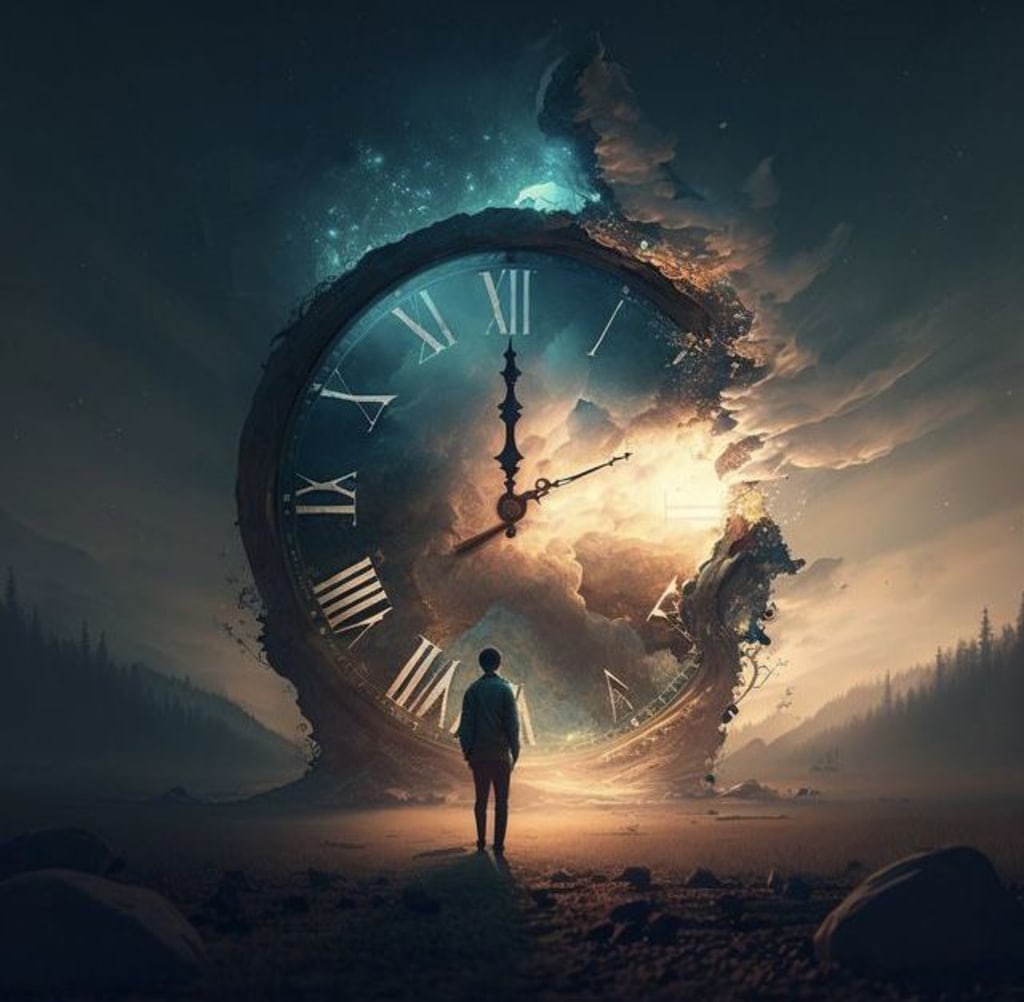Science behind the Mystery of Time Travelling
Time travel is a concept humans have been fascinating for years. But is it just a "concept" or a reality?

In March 2003, the FBI arrested 44-year-old Andrew Carlssin. Newspapers reported that Carlssin was extraordinarily lucky. In the history of stock markets, he had earned like no other. He invested $800 and within two weeks turned it into $350 million. The FBI suspected he was running a scam, believing he was an insider trader.
When questioned, Carlssin claimed to be a time traveller from 250 years in the future, knowing exactly how the stocks would perform. This extraordinary claim surprised the FBI, who were convinced he was lying. They found no records of Carlssin before December 2002. Even more surprising was that Carlssin disappeared before his bail hearing on April 3rd, never to be found again. Was he really a time traveller? Is it possible to travel through time, or is it just fiction for novels and films?
In this essay, let's explore the concept of time travel scientifically.
"Great, are you talking about a time machine?" "You know the rules of time jumps, right?" "Time travel: a concept explored since the early 1900s." "I have no idea, but when we're talking about time travel, either it's all a joke or none of it is."
In 1895, H.G. Wells wrote his groundbreaking novel The Time Machine. This novel popularised the phrase 'time machine,' a device that could travel into both the future and the past. Although fiction, Wells' novel inspired philosophers and physicists to write serious research papers and create many films about time travel. Time travel can be classified into different types, as depicted in various sci-fi films.
One-way travel to the future: You travel to the future and can't return, as shown in Interstellar, where the time traveller finds that his family members and others have aged or died upon his return.
Instantaneous Time Jumping: A person can jump from one point in time to another instantly using a time machine, as seen in Back to the Future and The Girl Who Leapt Through Time.
Time standing still: The time traveller stands still while time moves around them, depicted in Harry Potter: Prisoner of Azkaban with Hermione's use of the time turner.
Slow Time Travel: The time traveller goes back in time minute by minute, as shown in the 2004 film Primer.
Travelling at the speed of light: This allows travel through time, as seen in Superman (1979), where Superman flies faster than the speed of light to travel back in time.
Which of these time travel concepts are actually possible today? Which may be possible in the future, and which are completely unscientific? Surprisingly, some of these are possible today. Broadly speaking, there are two types of time travel: to the future and to the past.
Travelling to the Future
The scientific explanations and theories for travelling to the future are derived from Albert Einstein's Theory of Special Relativity, particularly the concept of time dilation. Before Einstein, time was believed to be constant, regardless of location or speed. Isaac Newton asserted that time flows at a constant rate. Einstein, however, claimed that time, like a river, can speed up or slow down depending on speed and gravity.
Time dilation can be achieved in two ways:
Speed: If you travel in an object going very fast, such as an aeroplane or spacecraft, time slows down for you relative to someone who isn't travelling as fast. For instance, if two identical clocks are compared—one kept on the ground and the other on an aeroplane—the clock on the aeroplane will show a slightly behind time after the flight. This was confirmed by the Hafele-Keating Experiment in 1971 using atomic clocks.
Gravitational Force: The closer you are to a high gravitational object, the more time slows down. Imagine a fabric of space-time with planetary objects as balls on it. Heavier objects create deeper curves in the fabric, causing time to slow down. Spending time near a black hole, for example, significantly slows time, as depicted in Interstellar.
Interestingly, GPS satellites experience time dilation due to their speed and distance from Earth's gravity. Scientists must continuously adjust the time on these satellites to ensure accurate GPS communication.
Cryosleep: Another potential method for future time travel is cryosleep, where individuals are put into a state of suspended animation. NASA is working on developing stasis chambers for astronauts, which would induce a state of mild hypothermia, slowing down bodily functions and ageing. This concept has been explored in films like Passenger.
Travelling to the Past
Currently, travelling to the past is not possible, but we can get a glimpse of the past. Because light takes time to travel, observing light from distant objects allows us to see them as they were in the past. However, actual time travel to the past is fraught with paradoxes.
Stephen Hawking's Party for Time Travelers: In a comedic experiment to prove that time travel to the past isn't possible, Stephen Hawking hosted a party for time travellers, but no one attended.
Theoretically, Einstein's theory of relativity suggests that wormholes could enable time travel to the past. A powerful gravitational field, like that of a spinning black hole, might create a closed time-like curve (CTC). However, opening such a wormhole would require immense energy, including negative energy, which is purely theoretical.
Paradoxes: Travelling to the past raises logical problems, such as the Grandfather Paradox, where killing your grandfather in the past would prevent your existence, creating a logical inconsistency. The Theory of Multiverse and the Predestination Paradox attempt to explain these issues, but they remain theoretical.
Conclusion
While travelling to the future is scientifically possible today, travelling to the past remains a theoretical and paradoxical challenge. As for Andrew Carlssin's story, it was actually a satirical piece published by The Weekly World News and later misreported as fact by other media outlets. It serves as a reminder to question extraordinary claims and seek scientific explanations.
I hope you found this essay informative. Let me know your thoughts and any other unexplained, mystery-related topics you'd like to explore in the future.
About the Creator
Enjoyed the story? Support the Creator.
Subscribe for free to receive all their stories in your feed. You could also pledge your support or give them a one-off tip, letting them know you appreciate their work.






Comments
There are no comments for this story
Be the first to respond and start the conversation.